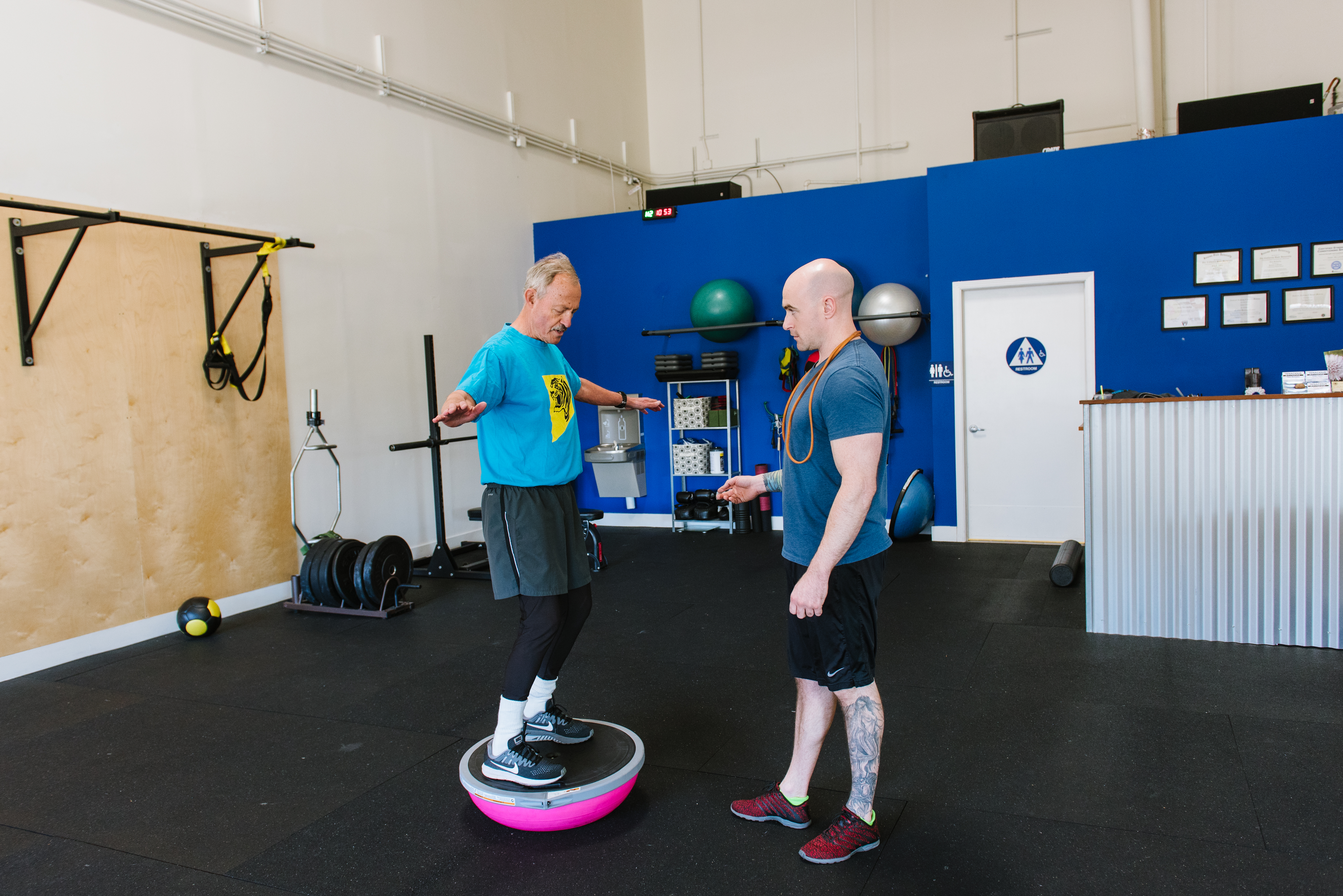Walking, turning your head, stepping on and off objects. These activities can be more challenging than we think when our sense of balance is disturbed. The regulation of balance perpetually occurs throughout a normal day. Take away an optimal level of balance, we have issues. Once we take one misstep off a curb, trip over a crack, or get startled to where the feet tangle up after a we get spooked by a loud noise and fall, it’s easy to understand how important balance is to our everyday lives. The risk of falling increases, recreational activities and sports become challenging, and working on projects around the house can be hindered by inadequate balance.
Visualize our bodies moving in a straight line during each step. As bipedal creatures, we depend on the gate of our feet to trace an imaginary line running through the center of our bodies. Deviating outside of the line indicates an imbalance in our path of movement. Sturdy muscles in the core and lower extremities contribute to the stability of the midline of the body. Coordination of these muscles acting in unison protect against the upper body from swaying away from the midline of the lower body, preventing the body from toppling over like the end of a game of Jenga. Training the body to be mobile through balance training, strength training, and remaining active in recreational activities and sports keep the mind acute and aware to compute when imbalances might occur to automatically correct them. Not only is it important to train the muscles responsible for balance, but it’s also important to pay attention to the visual comprehension to adjust to maneuvering around difficult objects in our way, identifying possible threats leading to falls, and recovering from unpredictable situations inducing a loss of balance.
One way we improve our Napa personal training clients’ balance is to discover where their imbalances are. The best way to improve balance, is to discover imbalances. From hyperathletic, to post surgery, to advances age individuals, challenges to balance and proprioception can always be introduced. Through safe and effective training, threats to poor balance can be improved. Here are some examples of techniques that can be performed safely in the comfort of our own homes to challenge our imbalances and improve balance when practiced regularly:
- Stand facing a wall with your hands resting on the wall. Lift one foot off the ground attempting to get the knee about hip height. Hold that pose for 5 seconds. Repeat on the opposite leg and perform 5 times each leg. To make this movement more challenging, while one foot is lifted, remove the opposite hand off the wall and raise it in the air. When you are ready to ramp it up more, lift both hands off the wall.
- Perform the old DUI test. Find a straight line to trace with your footsteps and place one foot in front of the other as you walk for about 5 yards and back. Repeat about 3 times. I’m sure Napa’s finest police officers would be thrilled that we are using this tactic as a strategy to improve our balance and health unhindered by the effects of debilitating substances.
- For an advanced form of balance training, stagger one foot in front of the other and close your eyes for 10 seconds. You’ll be surprised how challenging this may be. Please do this in a safe environment where there aren’t many falling or tripping risks. For an even bigger challenge, attempt to lift one foot off the group with your eyes closed and feet aligned one in front of the other.
To improve our balance, we need to improve our imbalances. Feeling confident in balance reduces the risk and fear of falling, allowing us to enjoy our lives more. Do you want to test your if your balance is up to par? Then you should be able to pass the universal DUI test when you are in a sober state of mind. More importantly, don’t be afraid to test your imbalances. The knowledge of knowing what you lack is powerful fuel to contribute to a critically important facet of lifetime fitness that will allow us to live life confidently and safely as we move.
Sean McCawley, the founder and owner of Napa Tenacious Fitness in Napa, CA, welcomes questions and comments. Reach him at 707-287-2727, napatenacious@gmail.com or visit the website napatenaciousfitness.com.

